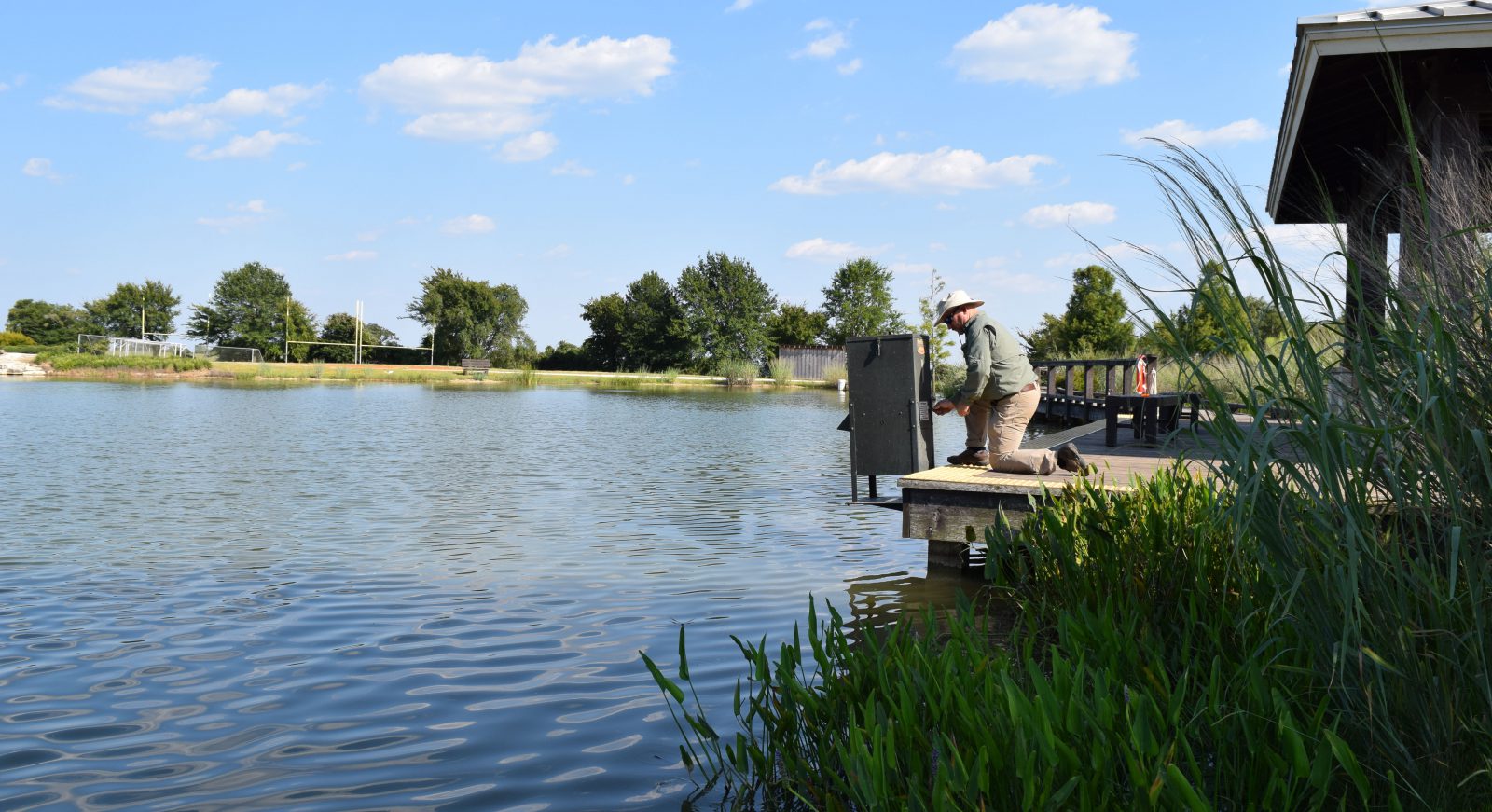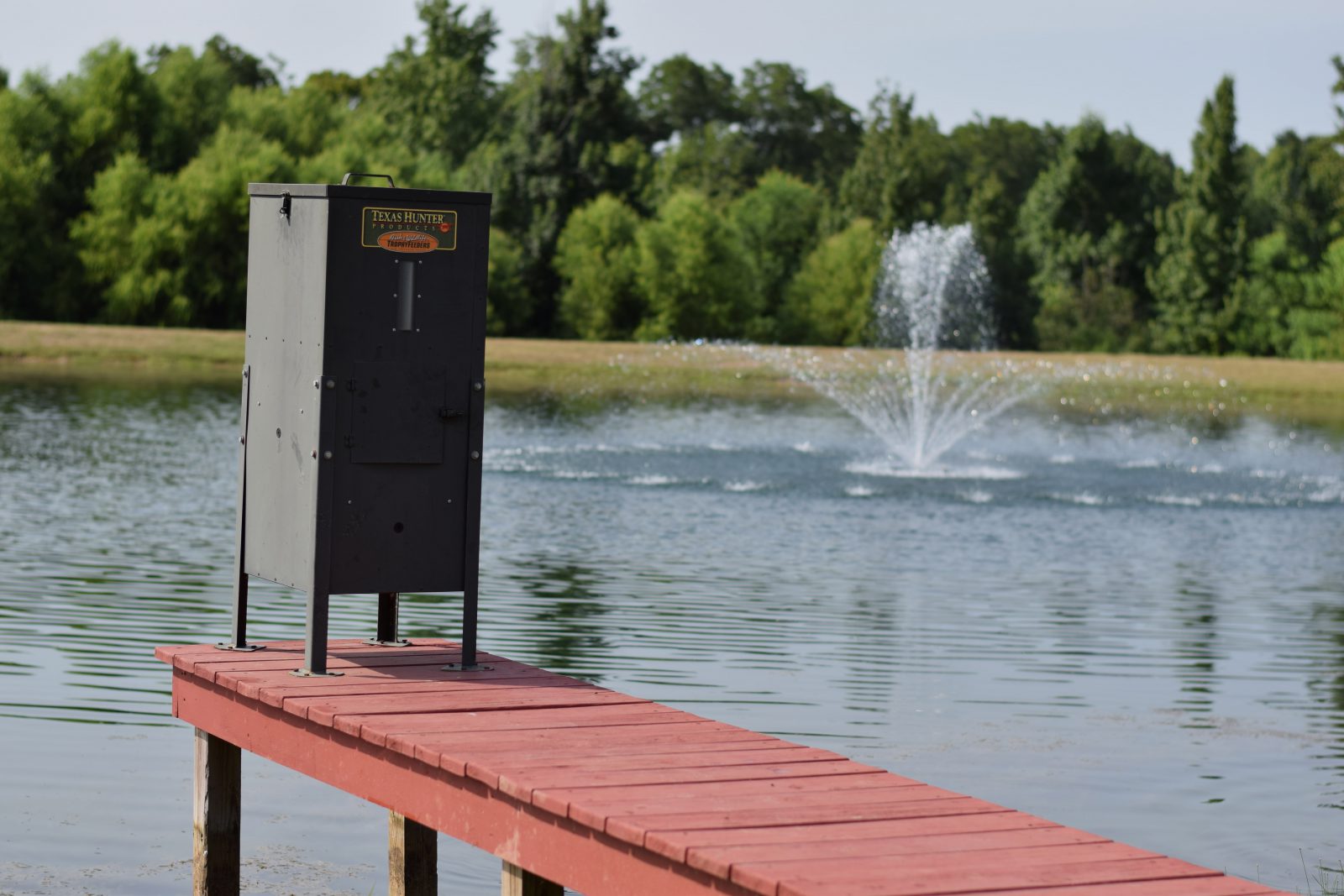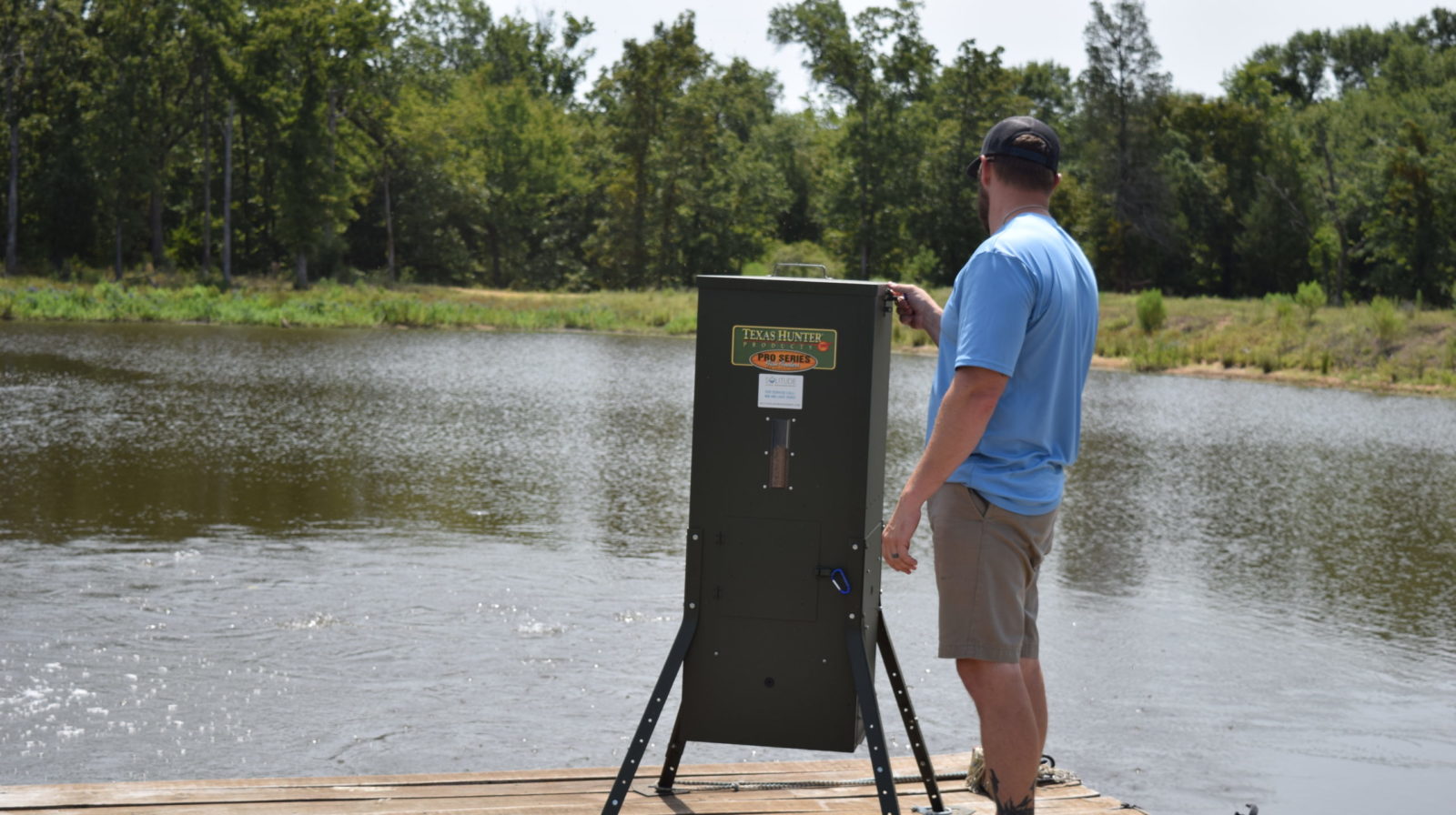
The Benefits of Supplemental Fish Feeding
“Why should I feed fish food to my fish?” As a Fisheries Biologist working on private ponds, this is one of the most common questions I receive each spring from clients hoping to enhance their fishery. In response to the question, I always explain that while fish food can significantly improve Largemouth Bass size and population structures, it is typically utilized to sustain forage fish.
The carrying capacity of forage fish is one of the most limiting factors of a bass fishery – but regular supplemental fish feeding can help grow forage populations that will push and extend the carrying capacity of your Largemouth Bass. Bass with access to as much forage as possible are more likely to reach their growth potential and stay on track to meet your fisheries goals.

Feeding Your Largemouth Bass
A great way to increase the production of forage for your Largemouth Bass is through the use of an automatic fish feeder that administers high-quality feed. Fish feeders come in multiple sizes and offer an array of options to meet the needs of your particular fishery. Many of them come with automatic timers to disperse the feed on a specific regimen. They can be installed on the shore or on a dock or float in the middle of the waterbody. Many of them come with solar panels, which simplify the required maintenance.
To ensure that your fish are reaching their full potential, it is critical to examine the feed type, when and how the feed is administered, and even the placement of the feeder on your waterbody. A professional fisheries management company can help you determine the best feed type for your fishery and recommend a suitable feeding schedule.

In addition to boosting the productivity of a fishery, an exciting benefit to a fish feeding program is that feeders encourage fish to congregate in key spots along the shoreline. Having fish congregated around a dock or grassy area can greatly enhance the enjoyment that kids and adults experience, since feeders provide both children and grandchildren with reliable fun. Outside of increased catch rates of feed-trained fish such as Bluegill, kids really enjoy watching the fish eat.
In addition to enhancing the forage base and providing kids with a smile on their face, automatic fish feeders are also an excellent option for “put-and-take” fisheries that contain feed-trained species such as Hybrid Striped Bass, Channel Catfish or Trout. In these fisheries, it is typical for the predator fish to feed directly on the fish feed, which helps to bypass the need for forage fish, while increasing the waterbody’s carrying capacity of predator fish.
3 Things to Know About Fish Feeders
Ultimately, there are three things to remember when feeding your fish.
-
- Feeding can increase the carrying capacity of your lake
- Feeding can be entertaining for both kids and adults
- Certain types of predator fish grow well on fish feed
Feeding fish can involve throwing a few handfuls food off your dock every morning, or utilizing feeders to dispense hundreds of pounds of high-quality feed per feeder each month.
Feeders, overall, are a great management tool that can be utilized to enhance a fishery as well as the experience of those fishing the waterbody. If you have questions related to feeding, reach out to an experienced fisheries biologist to help you determine your long-term fisheries goals and the best path to meet and exceed your expectations.
Contact Our Fish Feeder Experts
Call 888-480-5253 or complete the form below to discuss your fishery goals with a fisheries management expert.
Logan Cowan is a Wildlife & Fisheries Biologist who helps develop individualized lake, pond and fisheries management plans for new and existing clients. Logan has a special interest in analyzing fisheries data from electrofishing surveys.
SOLitude Lake Management is an environmental firm committed to providing full-service solutions that improve water quality, preserve natural resources, and reduce our environmental footprint. Our services include lake, pond, wetland and fisheries management programs, algae and aquatic weed control, mechanical harvesting, hydro-raking, installation and maintenance of fountains and aeration systems, water quality testing and restoration, bathymetry, lake vegetation studies, biological assessments, habitat assessments, invasive species management and nuisance wildlife management. Services, consulting and aquatic products are available to clients nationwide, including homeowners associations, multi-family and apartment communities, golf courses, commercial developments, ranches, private landowners, reservoirs, recreational and public lakes, municipalities, parks, and state and federal agencies. Learn more about SOLitude Lake Management and purchase products at www.solitudelakemanagement.com.









